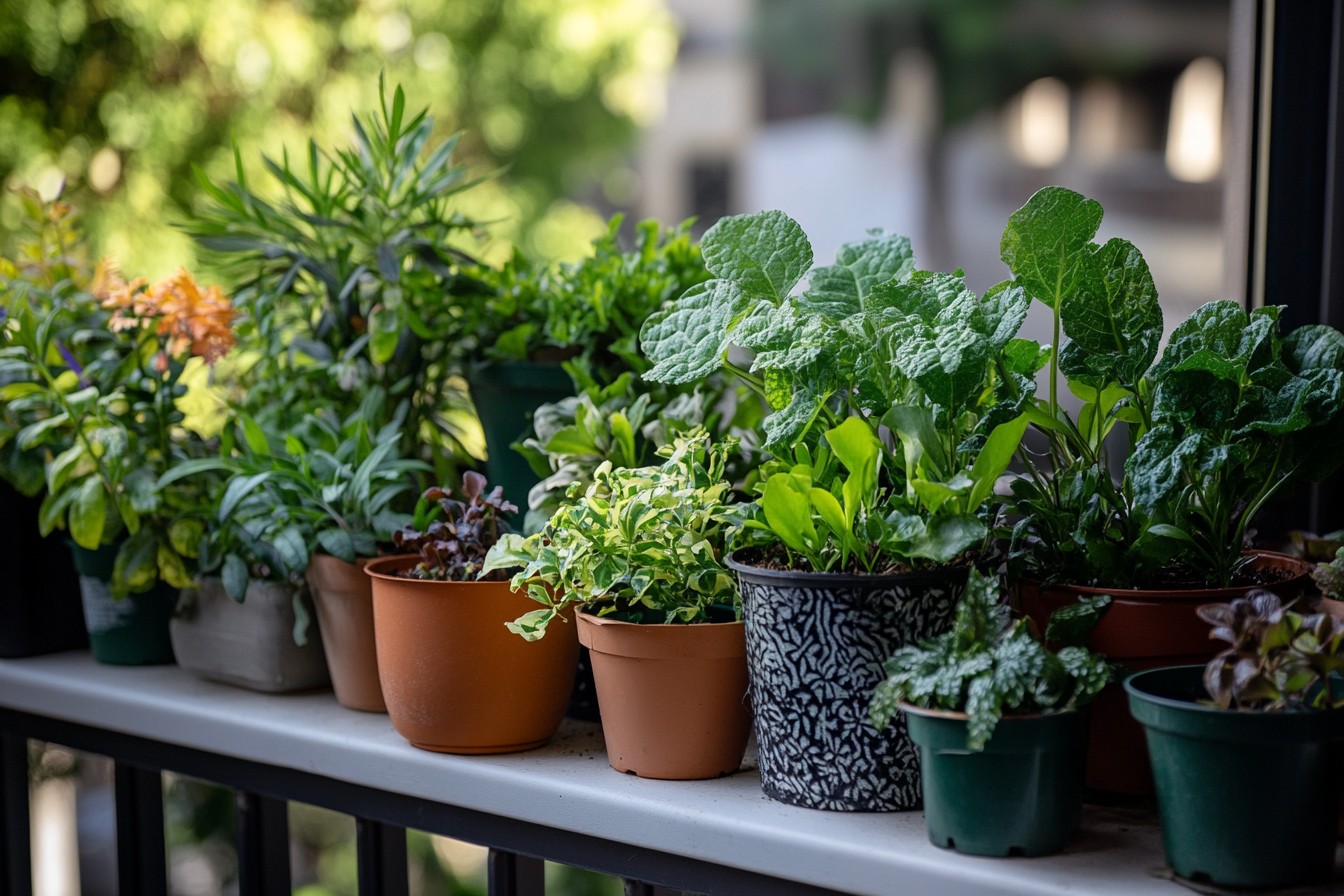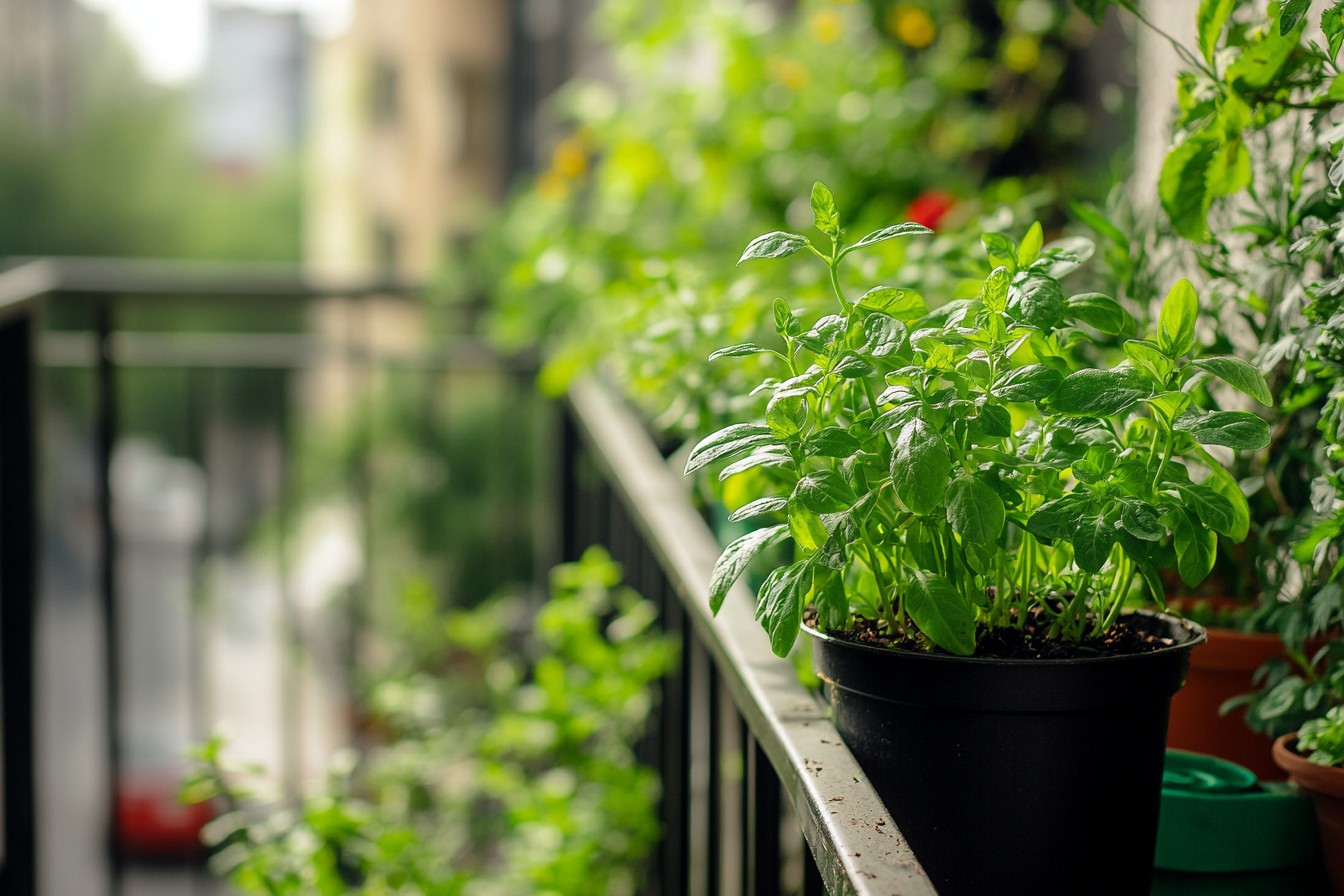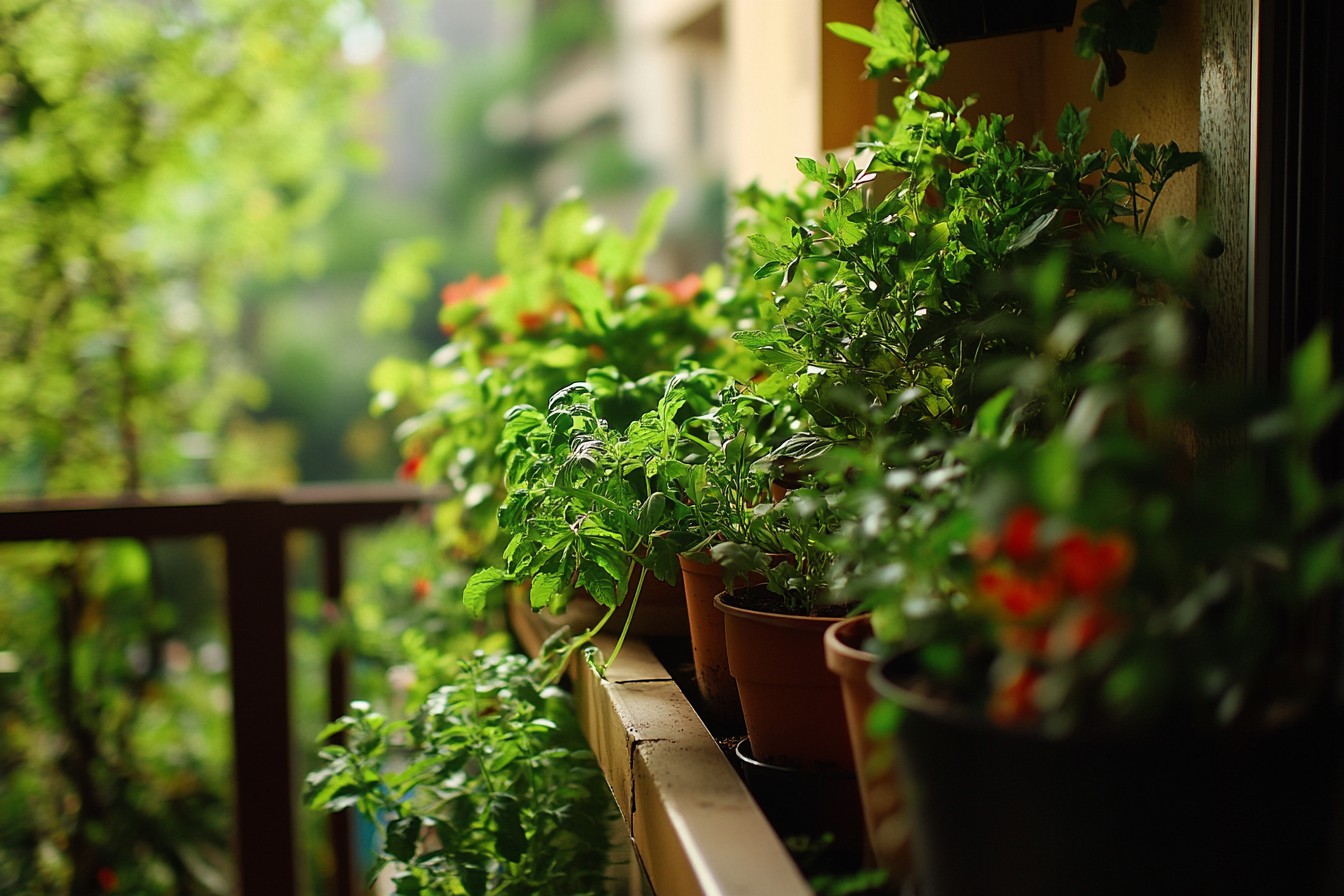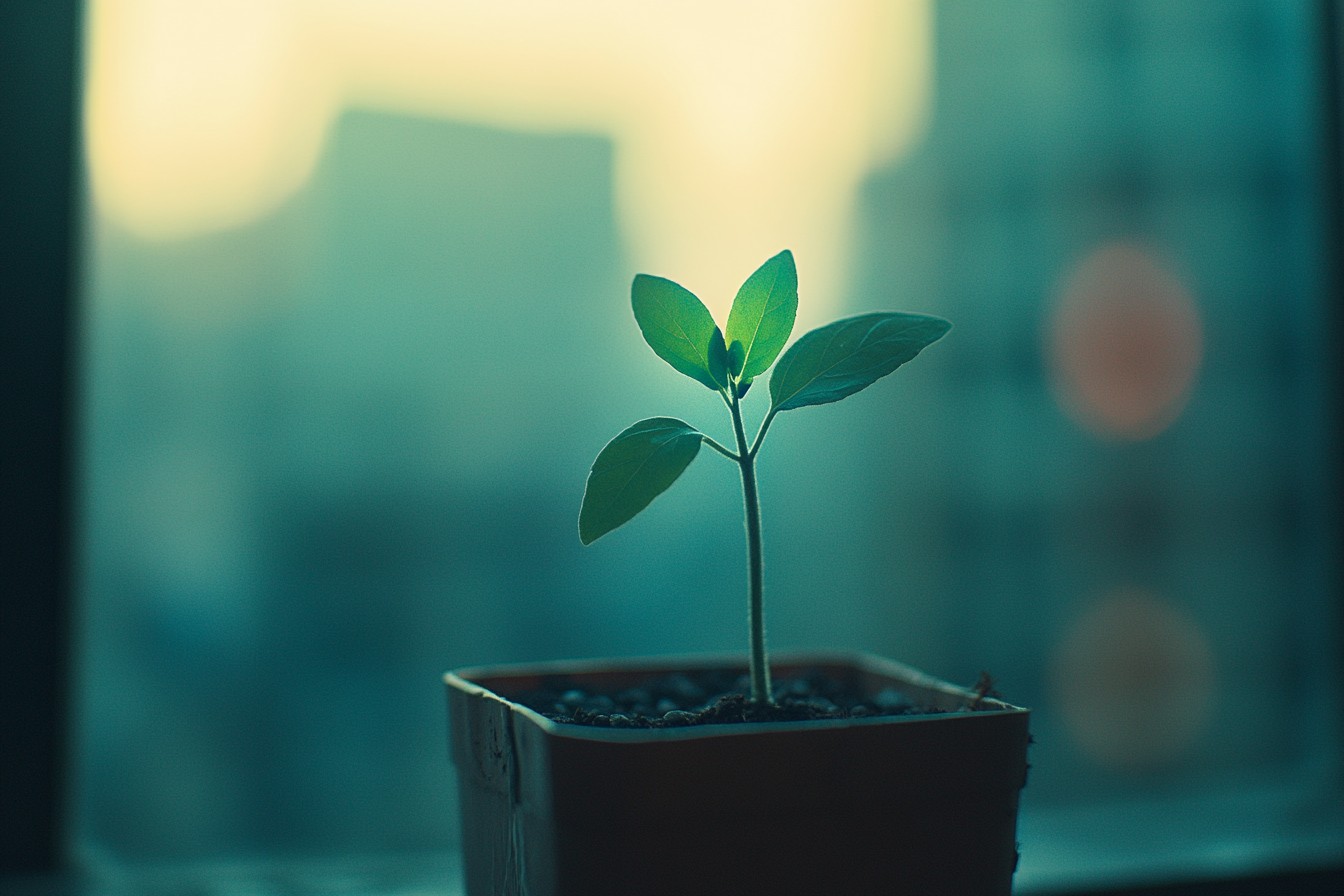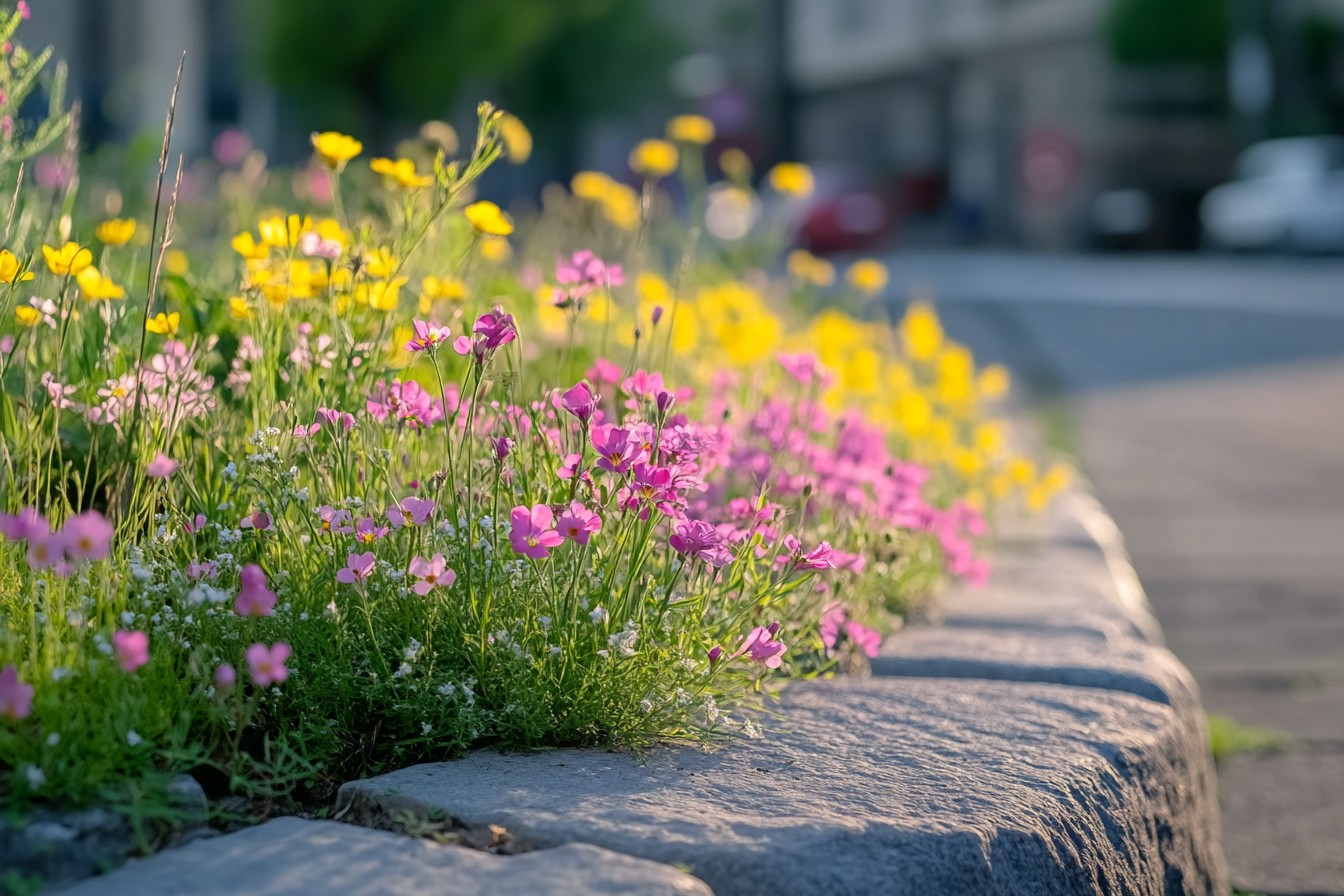The entire episode started with a head of romaine lettuce and unabashed cheapness. I was cutting up a salad in my kitchen and trimming off the bottom inch of the lettuce head like I had done a thousand times before when I recollected something my grandmother did when she used to have a farm in Wisconsin. She would place those lettuce butts in shallow containers and they would grow new leaves in the middle. Basically, it was free lettuce. And if there is anything better than paying $4.29 for organic romaine, it is the concept of free anything.
So I went ahead and did it. Placed that pathetic lettuce stump in a ramekin full of half an inch of water and positioned it on my kitchen windowsill. I felt smug about how cheap I was being and my connection ro my agricultural roots. Quite frankly, I set my expectations to nothing. The last time I attempted archetype my grandmother’s farming wisdom, I ended up with a moldy sourdough starter that regurgitation was forming sentience before I tossed it into the dumpster.
But three days later, the center of that lettuce butt was sprouting tiny green leaves. Like, actual growth I could witness. I sent my sister a picture with way too many exclamation marks, and she said, “Congrats on your science experiment. Call me when you can make a whole salad.” Challenge accepted, Lisa.
This was early 2020, right when the pandemic started, and we all were stuck at home looking for projects that wouldn’t make us go insane. I had just moved into a new apartment with a balcony – my first outdoor space in years. It was essentially a glorified fire escape; a 4 foot by 10 foot slab of concrete surrounded by a railing that I wouldn’t trust to keep a determined squirrel at bay. Most importantly, it was mine and it received about six hours of decent sunlight each day.
While everyone else was getting to grips with TikTok and baking sourdough, I had my attention set on that budding lettuce and asked myself, “What else can be grown from kitchen scraps?” The answer was surprisingly “quite a lot,” as long as you have very low expectations and unbounded hope.
It all started when I took a trip to my kitchen, the first step of my balcony transformation. I found the ends of some green onions, the base of a celery stalk, some garlic cloves that were beginning to sprout and a sweet potato from the back of my pantry that had started growing tentacles. Each of these went into their own container of water, which in my case were odd looking mugs, bowls, and that fancy whiskey tumbler I got at a work event. At the end, my kitchen windowsill resembled a plant séance.
The green onions were the first miracle. As for the roots, placing them in water will cause the green parts to start regrowing in a few days. In 5 days, I was astonished by how much growth had occured allowing me to cut some for my fried rice. The revelation was out of this world. I can grow food for no cost at all, all this while my apartment sunders in that watter. I felt very proud of myself as a botanist. “How have I emptied the packets of green onions in my adult life?” posed my second thought. Each bunch costs about 1.29 dollars and here I was, cultivating them without bound. My calculations said, if I continued this for even 60 years, I would single-handedly save 4 thousand dollars. The reality of this was astonishing.
Removed from its head of a sweating human, the celery tried straggled not to leave behind too much celery water. As it lost color, after a week, it began to grow tiny yellowish leaves, telling me I had gotten myself a celery plant. By week two, the celery started crowning with skinny, pale stalks. Sure, I had to change some of my gardening dreams. I cultivated it into a separated soil pot and though its stalks were stunted in growth, great enough to season soup with, it became useful for my stews and other soups. The stalks, while pale, did provide some flavor support and enhanced my desired taste. Instead of being tossed like leaves that go off my rooms window, these provided excellent taste for shredded salad.
In regards to garlic, I thought my scapes were long gone only to magically return back to life. I didn’t mind him not tearing into the fine sugared meringue I had grown fond of. Garlic scape is apparently a food and okay to be eaten. Scapes went wonderfully blended into succubus easier to prepare garlic bread and tasty slabs of my new french pet. Even though not providing its cloves garlic did try sprouting heads above my balcony, winning.
That sweet potato, though – it was massive. I began it in water, suspended by toothpicks like we all did in 5th-grade science. It blasted out shoots in every direction within two weeks. I curishly used the biggest pot I had, then it started to take over my entire balcony like in Little Shop of Horrors. The vines were 6 feet long, straddling the banister and dangling towards the lower balcony. James, my retired postal worker neighbor, strong opinions about everything, actually came up one day to ask if the “green tentacles” invading HIS space were some kind of danger. “Oh, no, they’re just sweet potatoes. Nothing to be worried about.” “Sweet potatoes? Huh. I guess it could be worse. At least it’s not weed, right?” With a shrug.
By May, my barren concrete slab balcony transformed into a midly productive hobo garden for growing. Lettuce regrown from stubs, green onions, celery, and sweet potato vines, though were slowly reaching for the sky.
I even had a pineapple crown sprouting in a pot, albeit I would not be able to harvest any fruit for at least three years.
I was saving money, however, not in large increments. My scrap garden was accounting for about $5-7 weekly. That’s not monumental savings but does justify the time invested. More importantly, the garden tended to my ever growing need to do something other than scroll through news alerts or cave into the dark depths of social media during the pandemic.
My first major expansion came when I discovered you could grow ginger from the roots you buy from the store. I found a knobby piece in the back of my produce drawer (this experiment was making me realize how poorly I managed my groceries) that had little buds sprouting from it. Following instructions from a surprisingly detailed YouTube video by a woman who maintained calling the ginger “her babies,” I carefully planted parts of it just below the surface of a wide, shallow pot.
For weeks, it seems that literally nothing happened. I nurtured it, hoped for something, and to my delight I watered it everyday. However, the end result was a pot filled with dirt. Just when I was about to give up, some tiny green shoots began to emerge and they looked nothing like ginger. These awkwardly resembled bamboo or even reed shoots that are tall and slender which have some leaves here and there. Eventually, I had a pot full of what can be mistaken as ornamental ginger grass but was actually ginger itself. I harvested a few pieces at the start of fall and although they were smaller than what those from the market, the flavor was really intense and there were no strings or woody bits.
Riding on my avocado-slicing triumphs, I decided to delve into growing avocado pits, which on Instagram, appeared to be turning into cutesy little trees that everyone and their dog was nurturing. Let’s just say my initial six attempts were a catastrophic failure. The worst-case scenarios included rotting, stagnation, and aggressive mold growth that made everything look like an ah-mazing science experiment. During attempt number seven, one pit finally split along the center and sent out a root. To my surprise, I got to witness its growth, pertaining zealously to the manner in which people celebrate the milestones of their first child. And then, after what felt like an eternity, I was able to watch it reach a whopping eight inches tall. Ever heard of Persephone? Of course you have; she was the first plant I named, though I admit, this does lead hastily down a path to adopting the persona of a quirky woman that calls her plants ‘fur-less children.’
Things didn’t go exactly according to keikaku. While carrots regrew their tops, they stubbornly refused to produce any new roots. On the other hand, bell peppers were of hit or miss – some sprouted with too much vigor, and others remained dormant despite identical settings. With my attempt to grow a clementine tree from seeds, I was forced to spend two years nursing a plant that, realistically speaking, would likely never bloom in my lifetime. Rowan would’ve been so embarrassed.
My biggest failure was trying to germinate a lemon tree from a seed. For several months, I carefully nurtured that seedling until it grew to an astonishing five inches. Then, somehow, it suffered a catastrophic death. One day, everything seemed fine, but the next it was just a crispy, brown stick. I still have no clue what happened, but I blame my neighbor’s cat who occasionally frequented my balcony and utterly despised anything I cared about.
My favorite victory is remarkable solely because it was a blunder. On my balcony, I had a miniature bin that was serving as a compactor for cafe grounds and veggie scraps that I intended on taking to the community garden for donation. One day, I spotted an object growing out of the compost – a small tomato plant most likely born from seeds of grocery store tomatoes I discarded. Carefully, I moved the plant to its own pot, and by August, it was yielding tiny cherry tomatoes that were sweeter than anything I had ever bought. The cost? Absolutely nothing. The smug satisfaction? Highly valuable.
I found the economics of my scrap garden intriguing. Some things were actually cost effective-from the green onions and herbs to the leafy greens, which all paid for themselves after a few harvests. Saving at least $15-$20 with each fresh harvest meant that one grocery store basil could be planted and harvested for months, as long as the roots were still attached to it. Although renegrowing lettuce did not provide enough to justify the effort, it did manage to supplement a few salads here and there which led to additional savings.
Some projects, from a cost standpoint, were not the most lunaticanfed, such as the amount of containers, potting soil, and fertilizer I used to grow a single cherry tomato plant. However, spending a dollar to eat even a single cherry tomato that you grew yourself from waste is deeply satisfying.
It was intriguing to compare the scrap-grown produce to what is bought in stores. The scrap-grown versions tended to be smaller, but tended to have more flavor. Store-bought scallions didn’t pack the flavor punch my regenerated scallions did. The sweet potato leaves (edible and tasty, as a Nigerian cooking site taught me), were tender and tasted delicious in stir-fries. The ginger was also an improvement, being less fibrous and much more aromatic compared to what I usually buy at the supermarket.
There were some unexpected lessons that came with it. I found out that, during July afternoons, my south-facing balcony transformed into a sauna sending even sun-loving plants into shock. I learned that container gardens in hotter weather are much drier than in-ground gardens, sometimes requiring watering two times a day during heat waves. I discovered precisely how many potted plants it takes to create what my upstairs neighbor diplomatically described as “a moisture problem” on her balcony beneath me (answer: fewer than you’d think).
I came across an entire group of individuals who focus on food waste, utilize small urban areas, and creatively grow food within limited spaces. I actively participated in online forums where people discussed whether supermarket potatoes with sprouts are worth growing (they are, but they come with severe health complications) and the best techniques for leek regrowth. These forum users quickly became my pandemic buddies, fostering friendships where we cheered when I harvested tomatoes from my compost pile and shared sympathy when squirrels excavating my garden for the third round of a garlic clove dig box.
But these health and gardening discussions couldn’t compare to the shift in my understanding of food systems and waste. Additionally, the idea of not utilizing viable food parts was something I had never taken into consideration. I always tossed used pineapple tops and potato peels because I was too ashamed and embarrassed thinking how they would clutter my house, however each piece possessed the potential energy and resources to form new food throughout the world. It was astonishing to recall how my disconnection and lack of awareness regarding the true potential of food I consume on a daily basis.
Even after three years, my balcony still appears as an amalgamation of scraps, but at least now I am capable of cultivating things from actual seeds like a half decent gardener. On the list of things I am currently growing are: green onions (permanent fixture), sweet potato vines (purely ornamental since they never produced decent tubers but look fantastic trailing over the railing), regenerated lettuce (now planted directly in soil after a day or so in water), and a budding collection of herbs from cuttings.
Every season, I try to dabble in growing ginger with some roots saved from the year before. She had to have been the last avocado I tried, her fate suffering a scale insect ion infestation beyond the reach of any neem oil treatment. I like to think that tomatoes I accidentally composted have become a yearly tradition, tossing overripe tomato bits strategically into specific pots and seeing what pops up. Helps get the my seed saving done for me.
My most recent project is attempting to grow mushrooms from the stems sold in stores. All I need is coffee grounds, cardboard, and a generous amount of time to kill. At the moment, I have something akin to mycelium, and while it is promising, it has yet to fruit. The mushroom community online has assured me that I am headed in the right direction, although my sister is still a little wary about munching on something cultivated from an Amazon box.
If you are also considering starting a scrap garden, I recommend beginning with the following: green onions, lettuce hearts, herb species with root systems, and celery bases. Gardening gives you a confidence boost, so these initial projects might give you the motivation to try more complex ones. If you have the space, sweet potatoes are fantastic due to their expansive vines. Although ginger and turmeric are slow, they are rewarding in the end. Starting with fruit trees is entertaining, but remember that you might not see any results—or food–in your lifetime.
Most of all, immerse yourself in the experimentality of it all. Some attempts will bring spectacular failure. Other will exceed your expectations in unimaginable ways. Attracting questionable wildlife and annoying a neighbor or two is a likely scenario. But the satisfaction of trying to grow food on waste is unmatched, and seeing the regenerative power of life happen on your balcony or windowsill is utterly amazing.
If your downstairs neighbor starts complaining about the “plant tentacles” protruding from your window, just gift them some of the cherry tomatoes you grew. It works every time. Now, even James has the courtesy to ask how my “garbage garden” is doing, which I take as feigned respect. That’s what I consider my most successful harvest yet.

